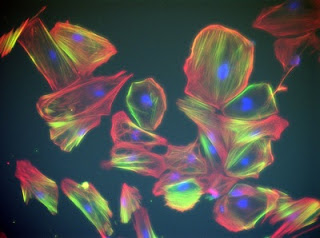Despite the small number of people affected by any one rare disease, together they add up to about 30 million people in the U.S. who contend with diseases that are poorly understood, poorly funded and in many cases lack national support groups.
The Rare Disease Day website lists activities throughout the world where people can learn more about rare diseases and the path to new therapies. It also includes a page describing how people can take action to get more support and awareness for rare diseases.
CIRM has several research programs focusing on rare diseases, including an $11 million award to Stanford researchers who are working toward a therapy for the lethal childhood skin condition epidermolysis bullosa. They are hoping to file with the food and drug administration to begin clinical trials in the next few years. You can watch videos of these researchers talking about the disease and their therapy approach here.
Other rare disease research projects that are within a few years of clinical trials include a $9 million award for a sickle cell disease therapy, two projects worth $34 million for HIV/AIDS (video about that project here), a $10 million award for ALS (Lou Gehrig’s disease) (video about that project here), and a $15 million award for macular degeneration (video about that project here). In addition, several of our cancer projects could benefit the many rare forms of cancer that affect only a small number of people.
CIRM also funds research at various stages of progress toward developing therapies for spinal muscular atrophy, multiple sclerosis, muscular dystrophy, Parkinson’s disease, Huntington’s disease, Alzheimer’s disease, Autism, retinitis pigmentosa and Rett Syndrome, all of which are considered rare diseases in the U.S..
You can see a complete list of rare disorders on the National Organization for Rare Disorders (NORD) web site. In Europe, Eurordis also has an excellent web site about rare disorders and YouTube channel featuring patient stories.
Prior to 1983, rare disorders were at a therapeutic disadvantage in the U.S. because pharmaceutical companies couldn’t make a profit developing drugs to treat diseases with small patient populations. As a result of a national effort on the part of patient advocacy groups, the Orphan Drug Act passed, giving special status to drugs that would treat rare diseases.
Tim Cote, chief medical officer of NORD, spoke at a rare disease caucus (you can watch his entire talk here). During his talk he said:
“The orphan drug act is, bar none, the single piece of legislation that is the most successful in the history of the United States of America. Orphan drugs have become the biggest growing part of the pharmaceutical sector.”He went on to say that the Orphan Drug Act wasn’t intended to let bad drugs through the system, but to inspire companies to develop and test transformative new therapies.
“People with rare diseases are entitled to drugs that actually work. The policy of our day is how to stimulate innovation and build upon these successes while retaining efficacy standards that have served us so very well to date and deliver science from the laboratory to the bedside without delay.”We recently produced a video with Victoria Jackson, whose daughter was diagnosed with the rare disorder neuromyolitis optica. She tells an inspiring story about founding a disease organization and prodding the small research community to start working more effectively—and quickly—toward a therapy for her daughter and other people with the disease.
Jackson’s is a compelling story about the power of patient advocates to make a real difference in accelerating the development of therapies—a story that is not unlike the passage of the Orphan Drug Act and CIRM’s own origins with the passage of proposition 71.
A.A.

